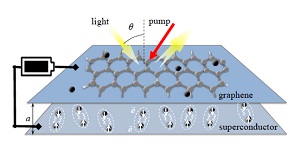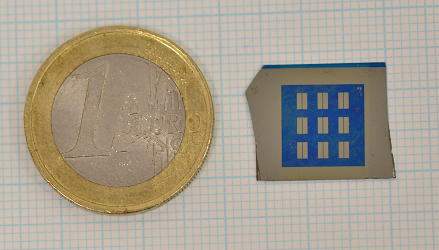Terahertz waves - unlocking hidden frequencies in the electromagnetic spectrum
A unique device, created by researcherds in the Department of Physics, will unlock the elusive terahertz wavelengths and make revolutionary new technologies possible.
Terahertz waves (THz) sit between microwaves and infrared in the light frequency spectrum, but due to their low-energy scientists have been unable to harness their potential. The conundrum is known in scientific circles as the terahertz gap. Being able to detect and amplify THz waves (T-rays) would open up a new era of medical, communications, satellite, cosmological and other technologies.

The electromagnetic spectrum and the 'terahertz gap'. Image: Getty
One of the biggest applications would be as a safe, non-destructive alternative to X-rays. However, until now, the wavelengths – which range between 3mm and 30μm – have proved impossible to utilise due to relatively weak signals from all existing sources. A team of physicists has created a new type of optical transistor – a working THz amplifier – using graphene and a high-temperature semiconductor.

Light in the THz frequencies hits the 'sandwich' and is reflected with additional energy
The physics behind the simple amplifier replies on the properties of graphene, which is transparent and is not sensitive to light and whose electrons have no mass. It is made up of two layers of graphene and a superconductor, which trap the graphene massless electrons between them, like a sandwich. The device is then connected to a power source. When the THz radiation hits the graphene outer layer, the trapped particles inside attach themselves to the outgoing waves giving them more power and energy than they arrived with – amplifying them.

A graphene amplifier
Research in the Department is being led by Professor Feo Kusmartsev who discovered the breakthrough with researchers from the Center for Theoretical Physics of Complex Systems, in Korea; the Micro/Nano Fabrication Laboratory Microsystem and THz Research Center, in China and the AV Rzhanov Institute of Semiconductor Physics, in Russia.
The team is continuing to develop the device and hopes to have prototypes ready for testing soon. Prof Kusmartsev said they hope to have a working amplifier ready for commercialisation in about a year.
The research team say such a device would vastly improve current technology and allow scientists to reveal more about the human brain.